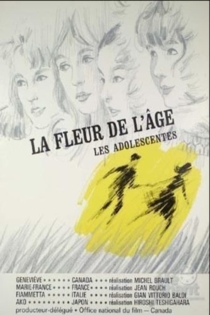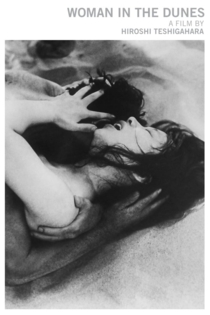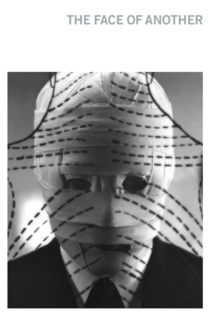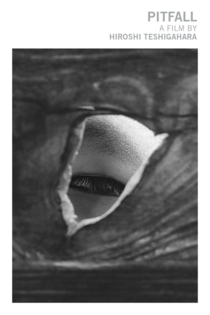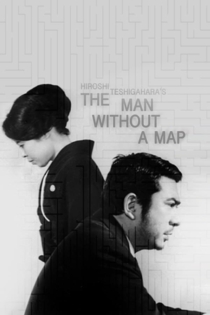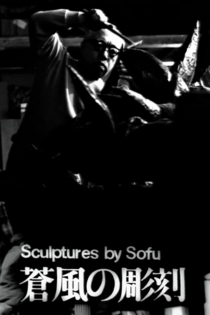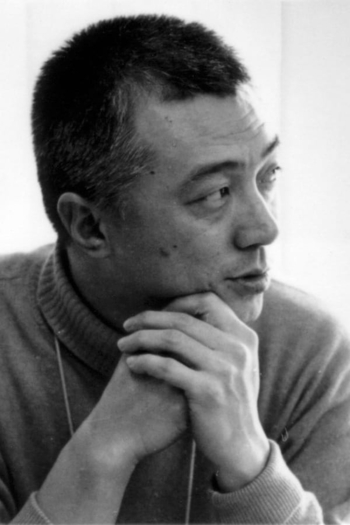
Hiroshi Teshigahara
1927 - 2001He was born in Tokyo, son of Sofu Teshigahara, founder and grand master of the Sogetsu School of ikebana. He graduated in 1950 from the Tokyo National University of Fine Arts and Music and began working in documentary film. He directed his first feature film, Pitfall (1962), in collaboration with author Kōbō Abe and musician Tōru Takemitsu. The film won the NHK New Director's award, and throughout the 1960s, he continued to collaborate on films with Abe and Takemitsu while simultaneously pursuing his interest in ikebana and sculpture on a professional level.
In 1965, the Teshigahara/Abe film Woman in the Dunes (1964) was nominated for an Academy Award and won the Special Jury Prize at the Cannes Film Festival. In 1972, he worked with Japanese researcher and translator John Nathan to make the movie Summer Soldiers, a film set during the Vietnam War about American deserters living on the fringe of Japanese society.
From the mid-1970s onwards, he worked less frequently on feature films as he concentrated more on documentaries, exhibitions and the Sogetsu School and became grand master of the school in 1980.
In 1978, Teshigahara Hiroshi directed the final two episodes of the long running and popular Japanese television series Shin Zatouichi, starring Shintarō Katsu as the blind wandering Yakuza. During Akira Kurosawa's 5 year hiatus from filmmaking, he watched a lot of television and was particularly taken by the final episode of Shin Zatouichi - Episode: Journey of Dreams (1978). The influence of this particular episode included the initial casting of Shintaro Katsu in the lead roles in Kagemusha and the extended artistic dream sequences contributed to those seen in Kagemusha (1980).
On the first anniversary of his death, April 14, 2002, a DVD box set containing his best known work was released in Japan in commemoration.
アントニー・ガウディー
Hiroshi Teshigahara
Isidro Puig Boada, Seiji Miyaguchi
Catalan architect Antonio Gaudí (1852-1926) designed some of the world's most astonishing buildings, interiors, and parks; Japanese director Hiroshi Teshigahara constructed some of the most aesthetically audacious films ever made. With camera work as bold and sensual as the curves of his subject's organic structures, Teshigahara immortalizes Gaudí on film.
Antonio Gaudí
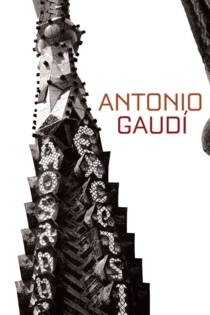
白い朝
Hiroshi Teshigahara
Miki Irie, Teruko Hasegawa
A day in the life of Ako, a 16-year-old Japanese girl, and her friends and co-workers. An alarm clock wakes her in a dorm; she gets ready for work and travels to a large bakery. We see her with friends, chatting and laughing, as well as working. They go out, seven of them jammed in an old Pontiac: bowling, then to an amusement park, then driving around. Car trouble may put her at risk. Is she going to be okay?
Ako
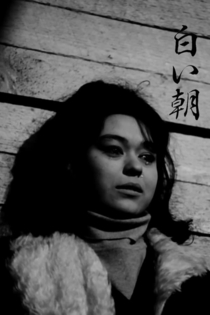
いけばな
Hiroshi Teshigahara
Tomoko Naraoka, Sofu Teshigahara
The history and art of ikebana, a centuries old Japanese art of flower arrangement and a look inside the Sogetsu School of Ikebana, where the director's father Sofu Teshigahara worked as the grand master of the school.
Ikebana
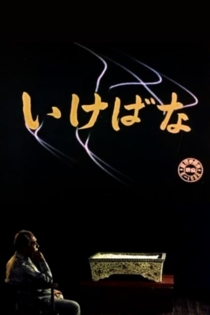
Jose Torres II
Hiroshi Teshigahara
Hiroshi Akutagawa
This is the sequel to Jose Torres (1959), the portrayal of Puerto Rican boxer Jose Torres, who won a silver medal in the 1956 Melbourne Olympics. We follow Torres from his training in preparation to challenge world lightweight champion Willie Pastrano, to the match and Torres’ victory in 1965. The contrast between the nervous Torres before the match, filmed in painstaking detail, and the first round, filmed in one shot, is striking.
Jose Torres II
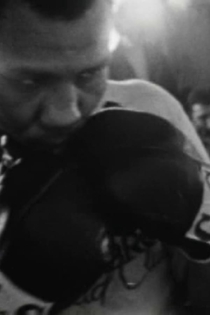
豪姫
Hiroshi Teshigahara
Rie Miyazawa, Tatsuya Nakadai
Furuta Oribe is ordered to become tea master under Toyotomi Hideyoshi after his teacher Sen no Rikyū, the former tea master, was ordered to commit suicide. Princess Goh, daughter of the lord but adopted by Hideyoshi, is outraged when Rikyū's severed head is thrown in the Nijo River. She sends Usu, Oribe's servant, to retrieve the head and deliver it to Rikyū's adopted daughter.
Basara: Princess Goh

東京1958
Hiroshi Teshigahara, Susumu Hani
Donald Richie
Eight filmmakers collaborate with Teshigahara to create a "frantic, non-stop pop newsreel". Mixing cutout animation with color and black & white photography, this snapshot documents Tokyo in 1957-58, when it had eight and ½ million people and was the largest city in the world. Pollution, bridal fashion, rites, rituals, partying-- Nearly every angle of Tokyo life is compacted into a mere 24 minutes.
Tokyo 1958

La fleur de l'âge, ou Les adolescentes
Hiroshi Teshigahara, Jean Rouch
A film in four episodes presenting teenage girls chosen as representative of their country and our time, in Italy, France, Japan and Canada. In spite of the stylistic peculiarities of the filmmakers, we find in each of them the same desire not to affirm anything, not to judge, but to quite simply show.
That Tender Age
